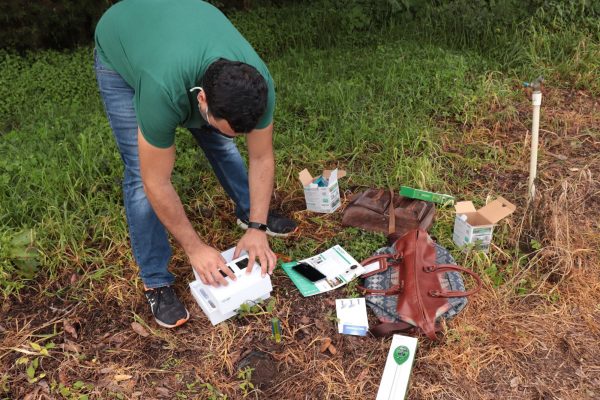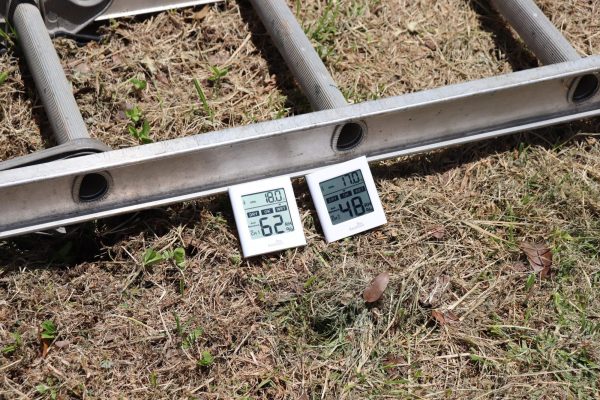
Climate change has been linked as a cause for mass migrations from Guatemala and Central America. Diego Pons wants to make large-scale climate science work for local farms and communities facing tough decisions.
Growing up in Guatemala, Diego Pons couldn’t help but recognize that climate had a remarkable impact on local environments, farms, and people.
“Guatemala is the most beautiful and yet the most complicated country at the same time,” said Pons, an applied climatologist and assistant professor of geography in the Department of Anthropology and Geography, who grew up in Guatemala City.
In some areas, a delayed start to the rains could diminish or destroy a planned first harvest for subsistence and the yields of small-scale maize growers; meanwhile, hurricanes can catastrophically wipe out fields, houses, and whole neighborhoods and communities. “Climate variability is nothing new in Guatemala,” said Pons, but it is also evident that unattended structural problems, like poverty, have amplified recent droughts and their consequences.
Since at least the 1990s, shifts in wind patterns and ocean temperatures in the Pacific – better known as the El Niño-Southern Oscillation and La Niña-Northern Oscillation – have triggered extreme climate changes in Central America. El Niño has caused extended droughts in the Dry Corridor of Central America while La Niña is associated with more frequent tropical storms and intense flooding, such as Hurricanes Eta and Iota in November 2020. The alternating climate extremes can affect sowing or harvesting dates making agriculture an ever-more-unreliable livelihood in Guatemala, where roughly 70 percent of the population lives in rural areas. According to the World Bank, Guatemala is now one of the five most vulnerable countries in the world when it comes to climate change, and also one of the five most affected by extreme weather.
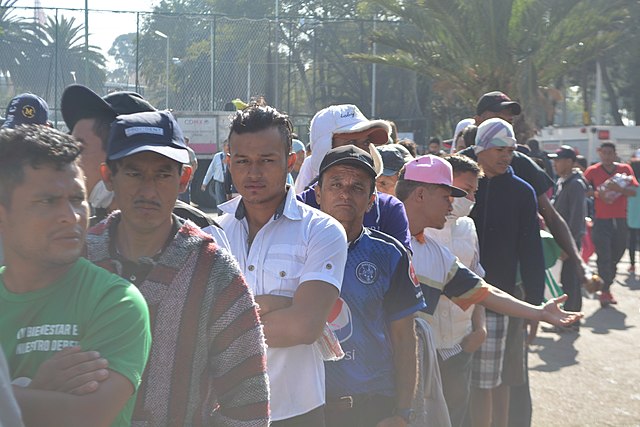
Climate change and its consequences are now frequently cited by media, foreign officials, and aid groups as one of the drivers of mass migrations from Guatemala and its Northern Triangle neighbors Honduras and El Salvador, dubbed ‘the migrant caravans’ of 2019 and 2020. And millions more in Central America are projected to migrate within countries and across borders in the decades to come. The predicament has attracted the attention – and dollars – of policymakers and foundations, although not always to the benefit of local communities, according to Pons.

Pons, who studies and models climate change in his native country and elsewhere in Central America, welcomes the attention, but he and others worry that much of the international support is oriented toward border control and other measures instead of local support of small-holder farmers and daily-laborers. Pons also emphasizes just how complex the relationships are between climate, geography, migration, and well-being in Central America – and just how important it is to work with the people who are farming and cultivating land or working the agricultural lands of others.
“We need to give people a voice to state their own problems and their own solutions,” said Pons, who collaborates with local farming associations and is designing and developing new methods and tools that can help a diverse group of Guatemalans dependent on the predictability of the local environment, including farmers, to improve their decision-making processes and reduce losses from climate.
“Dr. Pons’ research is crucial to our understanding of climate migration, since he examines complicated household agricultural and migration decisions rather than relying on deterministic models,” added John Lindenbaum, associate teaching professor of geography at CSU who also teaches a Climate Migrants course. “His work helps us understand the multicausality of migration in a deeply nuanced way.”
Climate Migrants
Mass migrations from Central America aren’t a new phenomenon. Political instability, employment trends, U.S. foreign policy, and periods of drug-related crime and violence have contributed to waves of immigration for decades. The emergence of climate change can magnify or exacerbate the other risks that underlie migration.
Dozens of news stories have depicted an imminent and sensationalized “invasion” of climate migrants, Lindenbaum said, but many fewer studies actually situate climate change as one factor influencing livelihoods in rural Guatemala.
That major disconnect concerns Pons, Lindenbaum, and others because it suggests an oversimplified challenge and can lead to oversimplified solutions. Guatemalans’ food security and wellbeing – and, ultimately, their decision to migrate from their homes – are entwined with climate in much more complex ways than reporters and even some researchers and humanitarian groups may recognize, Pons said.
For instance, he points out how many relief initiatives focus on the Eastern Dry Corridor of Guatemala, a landscape of relatively lower rainfall compared to the rest of the country. Rural Eastern Dry Corridor communities have experienced continued drought in recent years and are among the poorest in the region. Those conditions have led reporters to often use these communities as poster children of sorts to highlight the extreme consequences of a changing climate and how it can increase migrations.
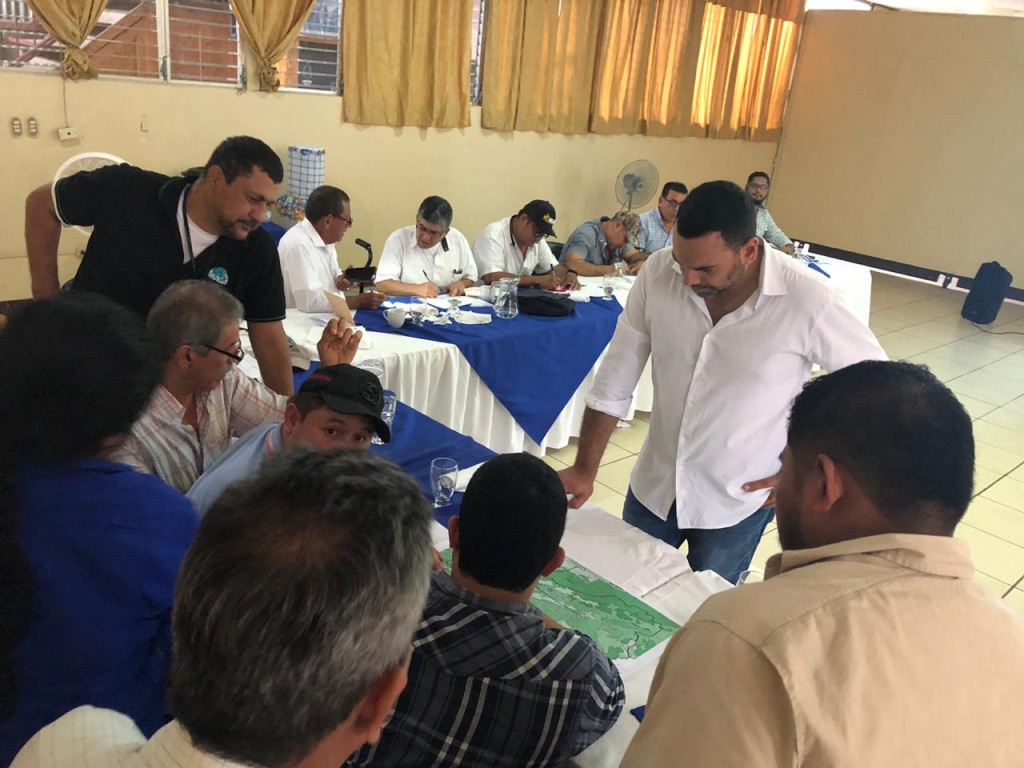
But while the Eastern Dry Corridor has endured extreme and devastating climate conditions, most migrants are not coming from that specific region and are often responding to other political or social pressures. Pons said Guatemala’s geography and climate mean the Dry Corridor can experience drought as other areas are having normal wet seasons and focusing on just one area means programs may prescribe measures and solutions that don’t meet many other communities’ needs.
Further, Pons laments that international reports often portray rural Guatemalans as exclusively subsistence farmers who solely eat what they grow to survive. Nearly 66 percent of adults in regions like the Dry Corridor also work as “unskilled labor,” such as on others’ coffee farms, for income that goes toward food and other essential household costs. Drought and the spread of coffee leaf rust also restrict opportunities for wage labor on commercial coffee farms. Overall, 47 percent of Guatemalan children suffer from chronic undernourishment. Many rural families also hunt and forage for foods but these pathways get less attention from policymakers, scientists, and support groups, even though they’re equally vulnerable to drought, floods, and other environmental changes and extremes over seasons and years.
Fairer prices for coffee and improved wages for workers is one policy fix; investing in habitat for important animal and plant food species is another adaptation. But, Pons said, those types of efforts are often overlooked or underfunded. As a result, well-meaning and funded international initiatives can miss the mark and increase the likelihood of some families deciding on a “last resort” adaptation strategy to abandon their lands and homes.
“There’s a misunderstanding between ‘seeing’ drought and what people across Guatemala deal with on the ground,” Pons said. “I worry we are not asking the right questions when it comes to climate and drivers of migration.”
“There’s a misunderstanding between ‘seeing’ drought and what people across Guatemala deal with on the ground. I worry we are not asking the right questions when it comes to climate and drivers of migration.”
Analyzing Data at Scale
Pons is applying his own research and innovation on local projects that partner with Indigenous communities.
During his undergraduate and master's programs, Pons studied biology and epidemiology and traveled across much of the country, from highlands to rainforests to coasts. Over time, he built relationships with coffee farmers and other agriculturalists and learned from the farmers themselves about the challenges that Central American farmers face.
His interests led him to graduate school and doctoral research in climatology, earning his Ph.D. in geography from University of Denver in 2017. He then earned a position as a postdoctoral research scientist fellow at Columbia University, where he helped develop seasonal and sub-seasonal forecast systems that could be used by coffee and other farmers in rain-fed agricultural landscapes. He has continued his research and outreach at CSU since 2020, including leading trainings for Guatemalan climate scientists and technicians to conduct their own research and forecasting.
Pons uses new and old information and tools in his work, from computer models to tree rings. Through dendrochronology, Pons collects tree-core samples to compile proxy data captured in tree rings that can show annual precipitation or moisture, forest growth, and environmental disturbances going back centuries. For instance, tree rings help scientists determine how El Niño behaved in the past and compare with its present movements and range of effects.
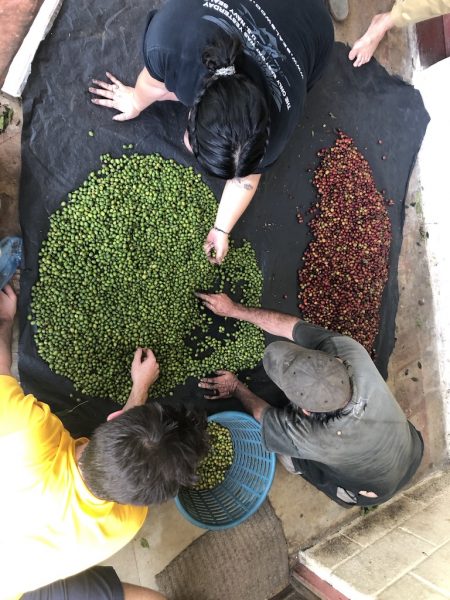
By compiling and analyzing data at different temporal and geographic scales, Pons seeks to provide knowledge and tools for farmers to use to adapt to near- and long-term climate and weather conditions. With the use of satellite weather data and climate models, scientists can now develop apps that provide real-time information and guidance that may alert farmers when to plant seeds, irrigate, and harvest.
“Climate services,” whether mobile-phone apps or workshops, represent a promising opportunity to build resilience for Central American farmers, said Pons. "If we are going to address food insecurity and alleviate poverty and aim to minimize climate-driven migrations, we need to have good climate information and make it accessible for farmers,” Pons said. “That matters to me a lot."
If we are going to address food insecurity and alleviate poverty and aim to minimize climate-driven migrations, we need to have good climate information and make it accessible for farmers."
Pons has stepped into this arena with the support of CSU Ventures. In 2020, he received a patent for new technological equipment he calls Watts, Weather, Water. The equipment, which Pons has designed using PVC pipe, solar panels, ultraviolet light, and other materials, looks like a small retractable palm tree that will be set in the ground in farm fields to automatically regulate temperature and soil moisture, and to help reduce environmental losses. The tool will be able to create a small umbrella-like canopy to help regulate shade when used in groups. The UV light and an alcohol trap will attract and kill insect pests. The climate data will also enable coffee farmers and others to make more effective decisions on when to irrigate fields or harvest crops while producing clean energy. Pons has built his own prototype of the equipment and is working with the National Renewable Energy Lab to attract funding for a pilot project at CSU.
“Dr. Pons has developed impressive, innovative tools to address our current challenges in combating climate change,” said Jillian Lang, Director of Licensing and Business Development for Food and Agricultural Sciences with Colorado State University Research Foundation. “His technologies include devices for in-field agricultural production and teaching producers and children about the impacts of climate change on agriculture.”
Ultimately, it’s about increasing production, Pons said, providing more opportunities for labor and jobs, and strengthening their resilience toward extreme climate events. These technologies aren’t tools or policies built to directly affect migration, but innovations that collect, monitor, and scale regional climate data for farms and communities, which offer what Pons sees as the most promising and effective ways to bolster food security and alleviate poverty and perhaps stem future mass migrations.
"Policy development is important,” Pons said, “but thinking about solutions available to us now using current technologies has the potential to help farmers around the world today and to prepare them for a changing climate.”
Navigating Borders
From water to dance, science to film, clay to gender, the liberal arts helps us navigate the borders in our lives that are physical, metaphorical, or cultural.

